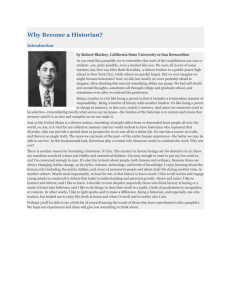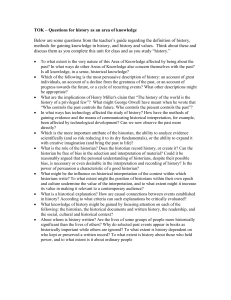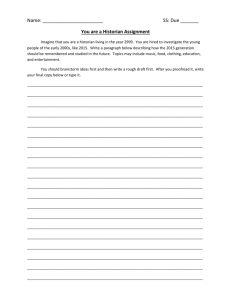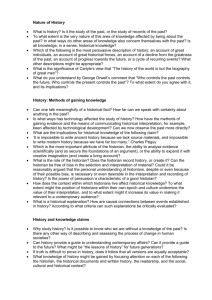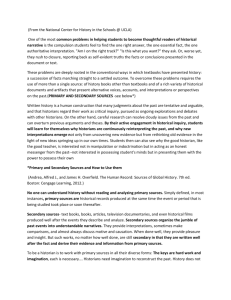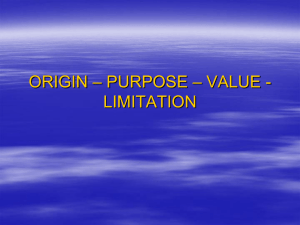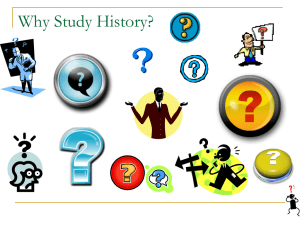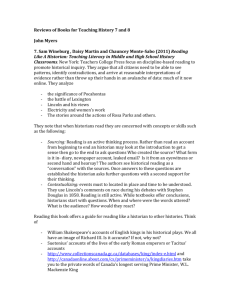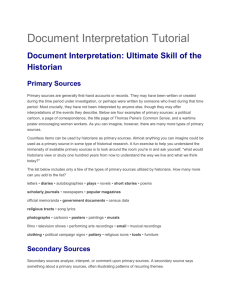Practice Questions
advertisement
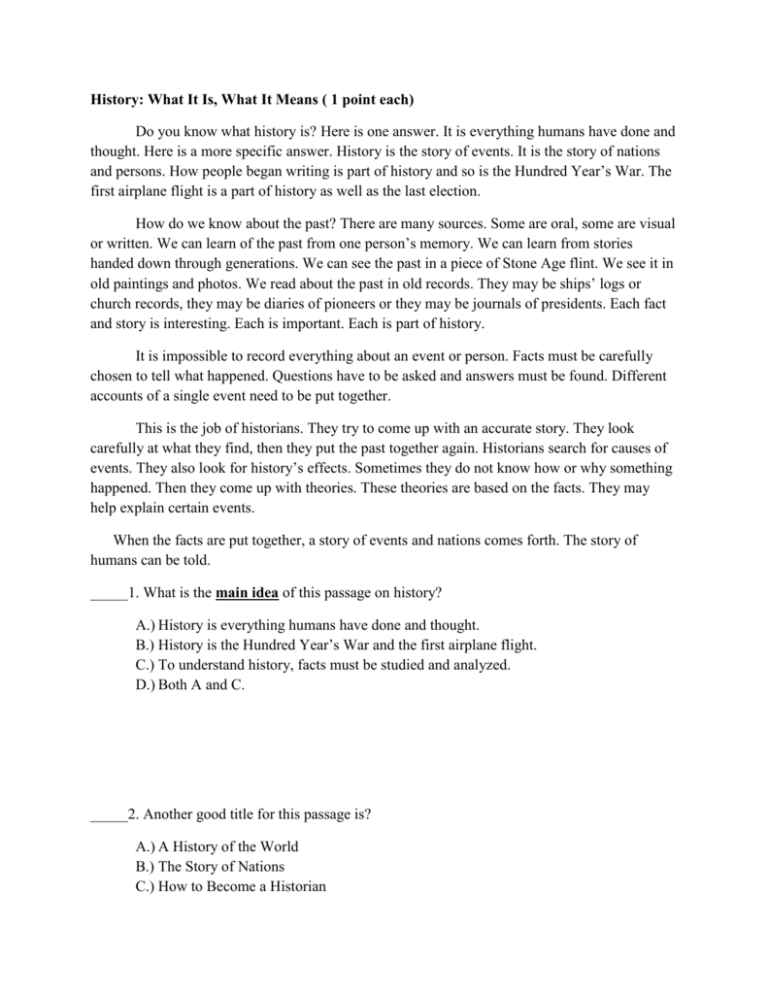
History: What It Is, What It Means ( 1 point each) Do you know what history is? Here is one answer. It is everything humans have done and thought. Here is a more specific answer. History is the story of events. It is the story of nations and persons. How people began writing is part of history and so is the Hundred Year’s War. The first airplane flight is a part of history as well as the last election. How do we know about the past? There are many sources. Some are oral, some are visual or written. We can learn of the past from one person’s memory. We can learn from stories handed down through generations. We can see the past in a piece of Stone Age flint. We see it in old paintings and photos. We read about the past in old records. They may be ships’ logs or church records, they may be diaries of pioneers or they may be journals of presidents. Each fact and story is interesting. Each is important. Each is part of history. It is impossible to record everything about an event or person. Facts must be carefully chosen to tell what happened. Questions have to be asked and answers must be found. Different accounts of a single event need to be put together. This is the job of historians. They try to come up with an accurate story. They look carefully at what they find, then they put the past together again. Historians search for causes of events. They also look for history’s effects. Sometimes they do not know how or why something happened. Then they come up with theories. These theories are based on the facts. They may help explain certain events. When the facts are put together, a story of events and nations comes forth. The story of humans can be told. _____1. What is the main idea of this passage on history? A.) History is everything humans have done and thought. B.) History is the Hundred Year’s War and the first airplane flight. C.) To understand history, facts must be studied and analyzed. D.) Both A and C. _____2. Another good title for this passage is? A.) A History of the World B.) The Story of Nations C.) How to Become a Historian D.) Making Sense of History _____3. Which of the following is not an example of a primary source? A.) An old photograph. B.) A diary or ship’s log. C.) A person’s journal. D.) Historian’s story about an event in the past. _____4. According to the text, to be a good historian, a person must not.. A.) want to know about the past. B.) be in a hurry to find answers. C.) be able to analyze information. D.) read a lot. _____5. We can infer from this passage on history that analyzing information is an important part of making sure the story and research on a person, issue, event, or topic is accurate. What does it mean to analyze information? A.) to find the main idea of a topic B.) to find supporting details on a topic C.) to break down information in order understand it in more detail D.) to compare and contrast information in order to find the similarities and differences _____6. In paragraph four of the passage, it says that historians search for the causes of events and for the effects of events. What are we doing when searching for the causes and effects of events in history? Standard: RH. 6-8.5 & 10 A.) Understanding the reason for why something happened and the end result B.) Finding clues and putting them together C.) Recording facts and asking questions about those facts to find answers D.) Learning about the past from many sources Use the map to choose the best possible answer. ( 1 Point Each) ______ 7. Which invaders traveled primarily across the Mediterranean Sea? A) Vikings B) Muslims C) Magyars D) all of the above ______ 8. From what region or country did the Vikings come? A) Byzantine Empire B) Russia C) France D) Scandinavia ______ 9. Which invaders reached Constantinople during the period covered by this map? A) Vikings B) Muslims C) Magyars D) all of the above ______ 10. What region or country suffered raids from all three types of invaders? A) Russia B) France C) Scandinavia D) Byzantine Empire Document 1 In The Middle Ages, historian Frantz Funck-Brentano made use of previously published texts to describe Europe in the ninth and tenth centuries (Heinemann, 1922, pp. 1-3). The barbarians have broken through the ramparts. The Saracen [Moors] invasions have spread in successive waves over the South. The Hungarians swarm over the Eastern provinces ... they sacked town and village, and laid waste the fields. They burned down the churches and then departed with a crowd of captives.... There is no longer any trade, only unceasing terror .... The peasant has abandoned his ravaged fields to avoid the violence of anarchy. The people have gone to cower in the depths of the forests or in inaccessible regions, or have taken refuge in the high mountains .... Society has no longer any government. ... 11. According to the author, what were conditions like in Europe during the 8OO's?
